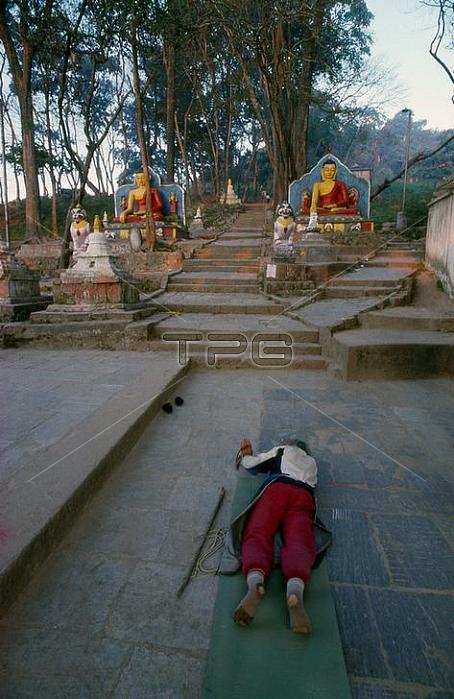
The date of construction of the Svayambhunath stupa; its origins steeped in myth; is unknown. According to the inscriptions on an ancient and damaged stone tablet at Svayambhunath; King Vrishadeva (ca. 400 CE) was the first to build a place of worship on the site. His grandson; King Manadeva I (ca. 464-505) may have made some additions.
The Muslim invasion of 1349 undid all the pious building work; the marauding Muslim warriors dismantling every kafir (infidel) sanctuary that they came across. An inscription at Svayambhunath records the date of the Muslim invasion as 20 November 1349; in all probability a very accurate account. After the raids Svayambhunath was restored; and most of the buildings seen today are from the post-invasion period.
Swayambhunath (Devnagari: ??????????? ?????) is an ancient religious complex atop a hill in the Kathmandu Valley; west of Kathmandu city. It is also known as the Monkey Temple as there are holy monkeys living in parts of the temple in the north-west. The Tibetan name for the site means 'Sublime Trees' (Wylie:Phags.pa Shing.kun); for the many varieties of trees found on the hill.
For the Buddhist Newars in whose mythological history and origin myth as well as day-to-day religious practice; Swayambhunath occupies a central position; it is probably the most sacred among Buddhist pilgrimage sites. For Tibetans and followers of Tibetan Buddhism; it is second only to Bodhnath. Pictures From Asia Rainer Krack
| px | px | dpi | = | cm | x | cm | = | MB |
Details
Creative#:
TOP19385930
Source:
達志影像
Authorization Type:
RM
Release Information:
須由TPG 完整授權
Model Release:
No
Property Release:
No
Right to Privacy:
No
Same folder images:

 Loading
Loading